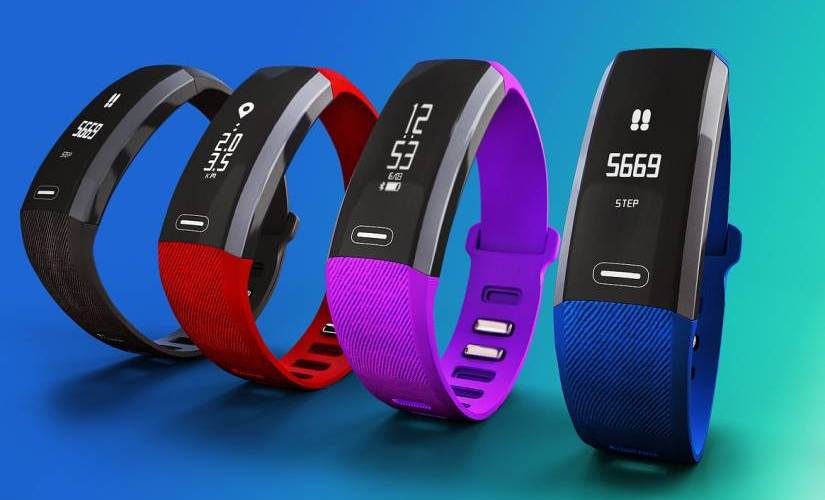The IoT is one of the most disruptive technologies across all industries today. There are already more than 50 billion connected items in use, and that figure keeps climbing as more organizations realize their benefits. One of the fastest-growing and potentially revolutionary use cases is IoT medical devices.
The Internet of Medical Things (IoMT) is relatively new but is showing signs of remarkable growth. Experts predict that the IoT in health care will be worth $142.25 billion by 2026. That shouldn’t come as a surprise, either, since these medical industry technologies improve efficiency and save lives.
7 Ways the IoT is Improving the Health Care Industry
Improvements in the medical sector benefit everyone. Here are seven ways that IoT technology is making things better.
1. Enabling Flexible Patient Monitoring
The healthcare industry faces a growing labor shortage, with experts expecting 29,400 unfilled nurse practitioner positions by 2025. Filling this employment gap will take time, and until then, hospitals have to treat more patients with fewer staff members. IoT patient monitoring systems help by enabling doctors and nurses to make their rounds more efficiently.
With traditional systems, hospital workers visit patients in person to monitor their condition. IoT connectivity enables them to check on vital signs remotely, removing the need to travel throughout the building. Eliminating the need to walk from room to room gives doctors and nurses more time to focus on their most urgent cases.
If a patient’s conditions require attention, IoT devices can alert staff so they can respond to the situation. This system takes time away from visiting patients who don’t need immediate care to enable quicker responses for those who do. The resulting efficiency lets understaffed hospitals care for an increasing number of patients.
2. Making Health Care More Accessible
One area of the IoT in health care that’s gained a lot of popularity recently is telehealth. Organizations can serve patients remotely by using a suite of different IoT devices like wearables. Adoption of these systems skyrocketed throughout the COVID-19 pandemic as in-person hospital visits became riskier.
Being in a hospital waiting room during a public health crisis puts patients at risk of contracting the disease. With the IoT, they can consult a doctor from their homes, receiving care without putting themselves at risk. As patients and hospitals alike realized this advantage, telehealth visits increased by 154% between 2019 and 2020.
These systems are even helpful outside of a pandemic, as they make health care more accessible. Remote checkups mean patients don’t have to travel to receive treatment, which also reduces costs. One study found that 88% of health systems reported a decreased cost of care after implementing telehealth.
These IoT-based systems also prevent overcrowding in hospitals. Fewer in-person patients allow more resources and staff to treat urgent cases.
3. Tracking Hospital Resources
Many organizations in other industries use IoT devices to track their equipment or other resources. Hospitals can do the same thing by tracking medical devices and even staff members. This visibility decreases the time nurses and doctors spend searching for people or tools, enabling them to help patients faster.
For example, some platforms can monitor up to 1,200 hospital beds, providing information like location and occupancy. This system allows hospital staff to find the nearest open bed when bringing in a new patient. While it seems like a minuscule improvement, this efficiency has helped some hospitals reduce wait times by several hours.
Similar systems can also enable health care organizations to track incoming shipments of equipment or medicine. IoT tracking services provide accurate, real-time updates about delivery times and location, helping hospitals better estimate incoming supply. Treatment centers can then schedule appointments without fear of overscheduling, managing patient expectations and using resources more efficiently.
4. Improving Medication Administration
IoT medical devices can also help pharmacies, hospitals, and patients manage medication more effectively. Roughly 50% of prescribed medication isn’t taken as directed, which can lead to severe health problems. Connected technologies like smart pill bottles and wearable sensors can let doctors ensure patients take their medicine as they should.
Smart pill bottles can alert patients when they need to take their medication, so they don’t forget and miss a dose. Similarly, these IoT devices can notify patients when they need a prescription refill. Text notifications or automated calls from these systems can even direct people on how to take their medication, so they avoid any side effects.
Wearable sensors can send medical staff information about how medicine is working in a patient’s body. This data will inform doctors or pharmacists if people aren’t taking their medication, aren’t doing so correctly, or are experiencing side effects. They can then adjust their care as necessary, prescribing different dosages or alternative drugs.
5. Optimizing Vaccine Delivery
Another use case of the IoT in health care that grew amid the pandemic is IoT-based vaccine transport and storage. Two of the COVID-19 vaccines have to remain at extreme temperatures, or they’ll expire. IoT sensors can help maintain these low temperatures and alert relevant workers if an issue arises.
IoT devices in vaccine shipment units can automatically adjust temperatures based on real-time data, just as a smart thermostat does for buildings. These same sensors can alert truck drivers if something happens that jeopardizes the cooling system’s integrity. The drivers can adjust their route to deliver them to a closer location, ensuring they don’t go to waste.
This use case may have gained traction during the COVID-19 crisis, but it’s helpful for other vaccines, too. Most vaccines require storage between 36 and 46 F, with some requiring even lower temperatures. While ensuring these drugs’ safety isn’t as pressing as COVID-19 treatments, it’s still a serious matter.
People in remote areas may have a higher need for vaccines, yet delivering them to these locations is challenging. IoT refrigeration and tracking ensure dosages don’t expire in the time it takes to reach these destinations. Populations who previously had little access to modern medicine can then receive the care they need.
6. Ensuring Hospital Sanitation
Sanitation is a leading concern in hospitals, but ensuring high levels of cleanliness isn’t always straightforward. It can be challenging to know if an area is genuinely free from contaminants, and disinfection takes time. IoT medical devices can help hospital staff achieve higher standards of sanitation more accurately and efficiently.
Bacteria can be just 1-3 micrometers in size, passing through basic air filters with little trouble. HEPA filters can stop these pathogens from spreading through the air but require frequent cleaning or replacement. IoT sensors in a hospital’s airways can monitor HEPA filter quality and alert staff when they should change them, ensuring cleaner air.
IoT-connected cleaning robots can also disinfect rooms while hospital workers focus on caring for patients. These machines can alert staff if they notice any concerning trends or pathogens. These deployments help hospitals stay as efficient and clean as possible.
7. Measuring Drug Efficacy
A new but promising application of the IoT in health care is monitoring clinical trials of new drugs. Traditionally, they rely on a mixture of self-reporting and in-person examinations, but these come with some issues. Self-reporting can be unreliable, and exams are often slow and take time away from doctors’ busy schedules.
IoT medical devices provide an ideal solution to this problem. Wearable sensors can upload data about a patient’s condition and biological signs that a secure cloud doctor can access. Medical professionals can then assess the efficacy of new drugs without having to schedule an in-person visit.
Since doctors can access and monitor this data at any time, they can work these trials around their other appointments. Health care organizations won’t have to sacrifice efficiency for information. This system will also streamline the trial process, finding potentially lifesaving treatments sooner.
IoT in Health Care Can Save Lives
In most industries, IoT adoption means increased efficiency and higher profits. It can bring those same benefits to health care organizations, with the far more critical advantage of improving medical care. These technologies could save lives, especially as adoption rises and more use cases emerge.
These seven examples are just a sampling of how the Internet of Medical Things (IoMT) is shaping the industry. As this technology advances, hospitals will be able to achieve even more with these devices. The IoMT is changing health care for the better.





